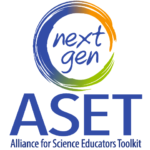
Grounding Phenomenon &
Essential Questions
Overview
“Science, engineering, and the technologies they influence permeate every aspect of modern life. Indeed, some knowledge of science and engineering is required to engage with the major public policy issues of today as well as to make informed everyday decisions, such as selecting among alternative medical treatments or determining how to invest public funds for water supply options. In addition, understanding science and the extraordinary insights it has produced can be meaningful and relevant on a personal level, opening new worlds to explore and offering lifelong opportunities for enriching people’s lives. In these contexts, learning science is important for everyone, even those who eventually choose careers in fields other than science or engineering.” (NRC, 2012, p. 7)
An important goal of three-dimensional science teaching is for students to be able to use scientific concepts to explain, understand, and design solutions related to phenomena in the natural world around them (NRC, 2012). The NGSS define phenomena as “observable events that students can use the three dimensions to explain or make sense of” (NGSS Lead States, 2013). A natural phenomenon upon which to base instruction should encompass the four following criteria (Roseman et al., 2015):
- Observable in the real world
- Relevant and meaningful for your student population (Will it spark your students’ interest and motivate them to ask questions and learn about the science content?)
- Related to the Performance Expectation(s) towards which your lesson or unit is helping your students build understanding
- Able to be explained by scientific concepts through the use of Science and Engineering Practices
Essential questions are the key questions that your students should be able to answer about the phenomenon by the end of the lesson or unit. These can be posed by the teacher or generated by the students. The essential questions focus student attention to the key parts of the phenomenon that they should be able to explain by the end of instruction.
Your students should continue to revisit and revise their explanations of the phenomenon and/or answers to the essential question(s) throughout a unit as they gain new evidence and information about the key concepts.
Instructions for 3D Map
Grounding Phenomenon: Describe the real world phenomenon that you want your students to be able to explain (in part or fully) by the end of the lesson or unit.
Essential Questions: List the key essential question(s) you will pose to your students (or guide your students to pose) about the phenomenon. (What are some key questions that your students should be able to answer about the phenomenon by the end of the lesson or unit?) Again, these questions should be as relevant and meaningful to your students as possible.
Guiding Questions
In planning the grounding phenomenon and essential questions for the lesson or unit, you should ask yourself:
- What are the important scientific concepts that students should understand in order to explain this phenomenon and/or answer the essential questions?
- How does this phenomenon connect to the Performance Expectation towards which this lesson or unit is building?
- Why do you think this phenomenon will be relevant for your students? How does it connect to their lives?
- Where is this phenomenon observed? Where would your students have observed this phenomenon? If not all of your students have observed the phenomenon already, what common experience can you give them about the phenomenon that you can draw from during the lesson or unit?
- How might you begin your lesson or unit by engaging students in beginning to think about this phenomenon? What are some resources that you can use (pictures, demonstrations, videos, etc)? How will you pose the essential questions and/or guide your students to pose essential questions about the phenomenon?
- How will you monitor (and help students to monitor) their ideas around the essential questions as they develop throughout the lesson or unit? Where might be key places in the lesson or unit where students should revise their ideas?
External Resources on Phenomena
References
National Research Council. (2012). A Framework for K-12 Science Education: Practices, Crosscutting Concepts, and Core Ideas. Committee on a Conceptual Framework for New K-12 Science Education Standards. Board on Science Education, Division of Behavioral and Social Sciences and Education. Washington, DC: The National Academies Press.
NGSS Lead States. 2013. Next Generation Science Standards: For States, By States (Glossary: Phenomena). http://www.nextgenscience.org/glossary/phenomena.
Roseman, J.E., Fortus, D., Krajcik, J., B.J. (2015). Curriculum materials for Next Generation Science Standards: What the science education research community can do. Symposium paper presented at the NARST Annual International Conference: Chicago, IL. Retrieved from http://www.aaas.org/sites/default/files/2015_Roseman_Fortus_Krajcik_Reiser_NARST.pdf
